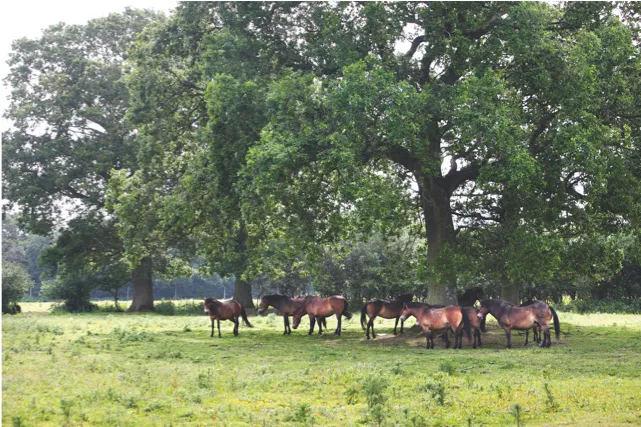At the end of a warm day in June, in sticky-sweet air laced with threats of thunderstorms, a bone-rattling safari drive in the back of an Austrian Pinzgauer troop carrier comes to a halt under a twilight sky, turning inky blue. By the bank of a hammer pond, where smoke and the clamour of a 17th-century iron furnace would once have filled the senses, rare bats now fly and a nightingale sings, unseen, from an unruly thicket.
It’s the perfect end to a three-hour safari through the 3,500-acre estate led by Penny Green, Knepp’s resident ecologist, whose expertise and knowledge of the estate’s wildlife is only surpassed by a handy knack of blending it into the larger ecological picture with ease and wit. As she pours wine and serves cake, she fields questions on any and everything that breathes or photo-synthesises in the immediate vicinity, and there is more than enough subject matter here on the West Sussex Serengeti.
Resembling a temperate form of savannah, the estate is largely wild plain – a woodland pasture, dotted with clumps of shrubs and trees, dissected by slow-moving water ‘laggs’ and thick, scruffy hedges perfect for Knepp’s signature nightingales. A Daubenton’s bat skims over the pond’s reflected sky, catching insects in its claws; there is little doubt that this is a wildlife haven in full charge towards high summer.
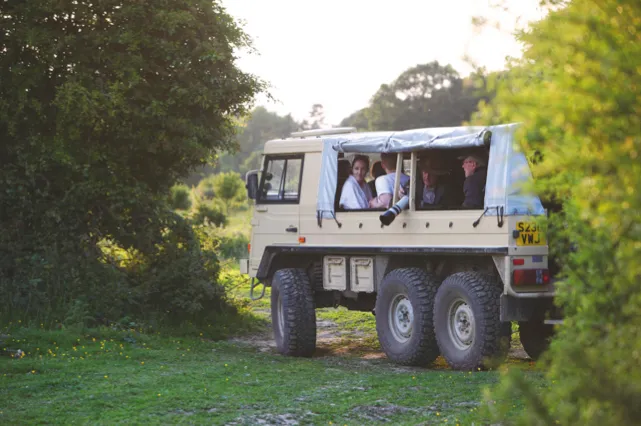
Visitors can experience the estate's wildlife-rich delights on safari
A wildlife haven – but no nature reserve. Where conservation organisations toil ceaselessly to manage every detail for the benefit of a single species or a type of habitat, Knepp is different; a working farm where the only manager is nature itself.
“We’re not concerned about the process, we’re just letting it rip,” says Knepp’s owner Charlie Burrell, who inherited the estate from his grandparents in 1987. “The whole thing is about sitting on your hands and not worrying about what happens.”
For Burrell, it’s a way of farming far more productive and profitable than has been the case for the past century. His ancestors tried to tame the Weald soils – heavy clays unsuited to arable farming – and bring it into profitable production, using lavish inputs of fertiliser and chemicals. After 20 years of concerted efforts – what Burrell describes as “wall-to-wall production”, with 600 dairy cows and 2,000 acres of land in arable and diversifications that included an ice cream factory – nobody could accuse the estate’s owners of a lack of effort or imagination. Despite their attempts, the farm lost money every year. Something had to change.
Taking its cue from the virtually unpronounceable Oostvaardersplassen experiment in the Netherlands, the Knepp Estate embarked on a
long journey entirely at odds with the theories and thinking of both modern agriculture and nature conservation.
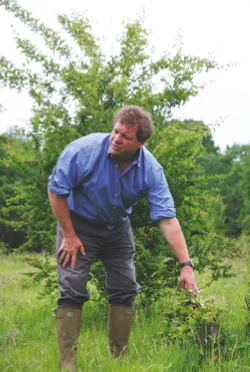
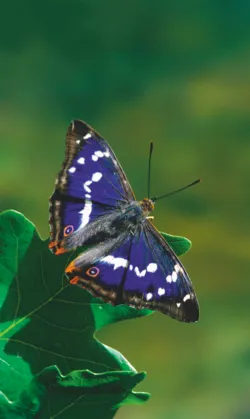
Left: Knepp's owner Charlie Burrell has found rewilding the farm far more effective and profitable than the former approach of "wall-to-wall production"
Right: In 10 years, Knepp went from no purple emperors at all to having Britain's second largest population. The natural creation of a mass of sallow scrub (sallow is a type of broadleaf willow) at Knepp proved an excellent habitat for the butterflies' caterpillars
Dutch pioneers
The Oostvaardersplassen nature reserve lies on a 22-square-mile polder, or reclaimed area, originally intended for industry. It narrowly escaped that fate, first because the economy stagnated, and then thanks to the efforts of a group of Dutch conservationists, among them Frans Vera.
In this rare wild space just half an hour from Amsterdam, Vera formulated and refined his large-herbivore theory. This was a direct challenge to the received wisdom that all ecological processes end in a vast wild wood. In Vera’s model, extinct large herbivores such as the woolly mammoth and the auroch (the huge wild ox from which all the world’s 1.5 billion cattle are descended) roamed the temperate plains in much the same way their modern counterparts do in Sub-Saharan Africa. Their presence helped create vast areas not of forest, but of grassland dotted with shrubs and trees.
When Vera introduced some modern equivalents to the Oostvaardersplassen landscape – Heck cattle and semi-feral Polish Konik horses – the resulting changes to the environment persuaded threatened wetland bird species such as spoonbill and bittern to colonise the area. There were marsh and hen harriers, ospreys and even a pair of nesting white-tailed eagles. Vera had proved the value of letting nature take its course.
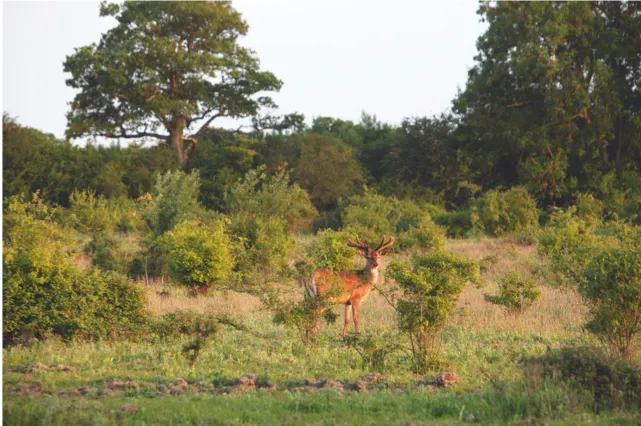
Fallow deer are part of the Knepp fauna
Wilderness reborn
When Burrell met Frans Vera in the 1990s, the model of a self-managed, productive wilderness inspired him to move Knepp in the direction of rewilding in the service of agriculture – though Burrell frames the story in the language of conservation.
“Every generation, your understanding of what is in the sea, on the land, on the water-meadow is so different from the previous generation’s. The sheer quantities of animals that were roaming Europe in relative recent history, we just can’t imagine it – and because we can’t imagine it, we don’t believe these habitats belong here.”
A herd of longhorn wandering across the Sussex plain has a kind of aesthetic majesty we are unused to in Britain, but we might begin to get used to it if Vera’s hypothesis holds water. Although the Knepp strategy has gained traction with conservation organisations – the estate recently hosted
a meeting of 40 land managers from the National Trust – it is still a hypothesis.
The record of biodiversity at Knepp since it was turned over to nature is impressive. But for Burrell, it wasn’t only the prospect of biodiversity that signalled there was a sustainable alternative to mainstream modern agriculture. After a decade, the rewilding of Knepp has put the farm in profit at the same time that the wildlife has thrived. Profitability has soared as the cycle of ever-increasing input was broken. Farm buildings released from farm business are rented out as warehouse and workshop-space – in all, these new businesses employ nearly 200 people.
Together with about £200 per hectare in environmental stewardship subsidy, and about the same from the Single Farm Payment, the estate sells quality meat from its Longhorn cattle, its Tamworth pigs and venison from the estate’s deer population. Tourism contributes as well, with regular safaris and a small savannah-style glamping site with shepherds’ huts and a tipi.
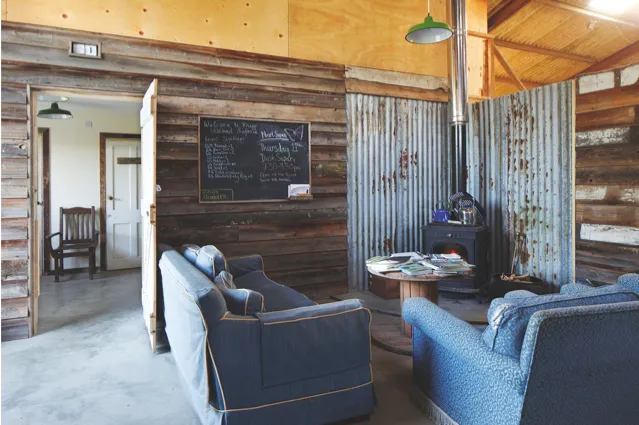
Knepp's farm buildings are now used for visitors and safari groups or as workshops
Balance restored
The remarkable outcome of more than a decade of nature’s work is the real story behind the safaris. Restoring a natural balance to the land has allowed severely threatened species such as Bechstein’s bat, turtle doves, cuckoos and lesser-spotted woodpecker to thrive, as well as provide the habitat for 2% of Britain’s breeding nightingales and the second largest colony of purple emperor butterflies.
And when you have 3,500 acres of land going wild, kept in check only by those large animals that can be mustered in modern Britain – longhorn cattle, Exmoor ponies, wild deer, and Tamworth pigs – some startling conclusions start to emerge. One is, that given enough space, nature doesn’t need very much management at all. A critical mass – as proposed by the conservation charity Rewilding Britain – of around 4% of our land and 30% of our territorial waters might provide us with all the habitat our wildlife needs.
We tend to think of conservation in the short term; at best it’s about saving a species or a habitat to hand on to the next generation, but give true wilderness full reign and you settle the matter for good.
